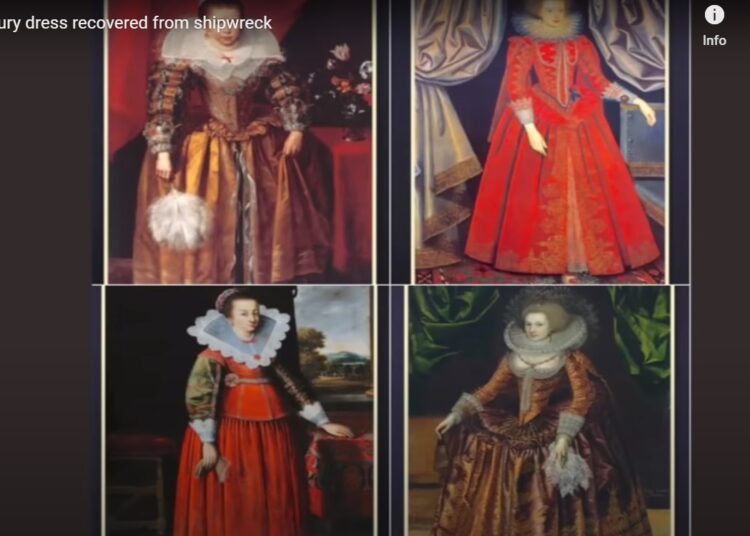Imagine an almost perfectly preserved sumptuous, super-expensive, silk dress lying hidden for almost 400 years in a shipwreck. This is exactly what divers found in a ship that sank off the island of Texel in the Netherlands in the 1600s. The vessel itself is like a time capsule, a treasure trove of historical gems that may lift the veil on the everyday life of a woman of that time period.
Buried under sand after the shipwreck, it was largely forgotten until 2014, when members of a Dutch diving club found the dress, in an almost perfect condition, and brought it to dry land. The divers also found a different, silver dress, book covers and what appeared to be 17th-century women’s toiletries, among other things.
The dress and the other artifacts that shed light on the fashion trends of the 17th century elites, have since been the subject of a museum exhibit, as well as an upcoming multimedia project that includes a podcast, a television show and a digital reconstruction. The recovered artifacts are on display at Museum Kaap Skil on Texel, a Dutch island about 60 miles north of Amsterdam with fewer than 14,000 residents.

Despite the surge of interest, the mystery of the silk dress has not been solved. Who owned the clothes? Where was the ship going? And who was on board?
The two dresses, probably made in about 1620, were about 30 years old by the time they went down with the ship. “These dresses were incredibly expensive,” said Arnold van Bruggen, the director of the upcoming television documentary on the topic. “[They] would not have been seen outside of royal court circles.”
Mr. van Bruggen said they had arrived at a number of plausible theories, based on their conversations with historians, scientists and other experts. All point to the owner of the dress being a member of the upper classes, but other details haven’t been proven. One possibility is that the clothes belonged to a theater company that was fleeing England. A second, based on research by a historian at Oxford University, is that the clothes, as well as the other items, belonged to the deceased wife of an ambassador and were being taken back to England from Constantinople.

A third possibility is that the objects belonged to a wealthy Eastern European family who were escaping the Thirty Years’ War. And finally, some researchers believe that the silk dress may have belonged to Jean Kerr, Countess of Roxburgh, confidante and lady-in waiting to Queen Henrietta Maria of England.
The mystery could be solved by further underwater exploration, but such expeditions are expensive and there are over 3,000 shipwrecks off the coast of the Netherlands that could be explored. The agency has covered the Palmwood wreck with a type of mesh to protect it from erosion and other damage, which could preserve it for decades.
Hans Dijker, one of the amateur divers who found the dress in 2014, at first had no idea that they had found such a treasure, and was even more unsure of what to do with a dress, of all things. For a while, Mr. Dijker said, “It just hung on a hanger in our clubhouse.”












